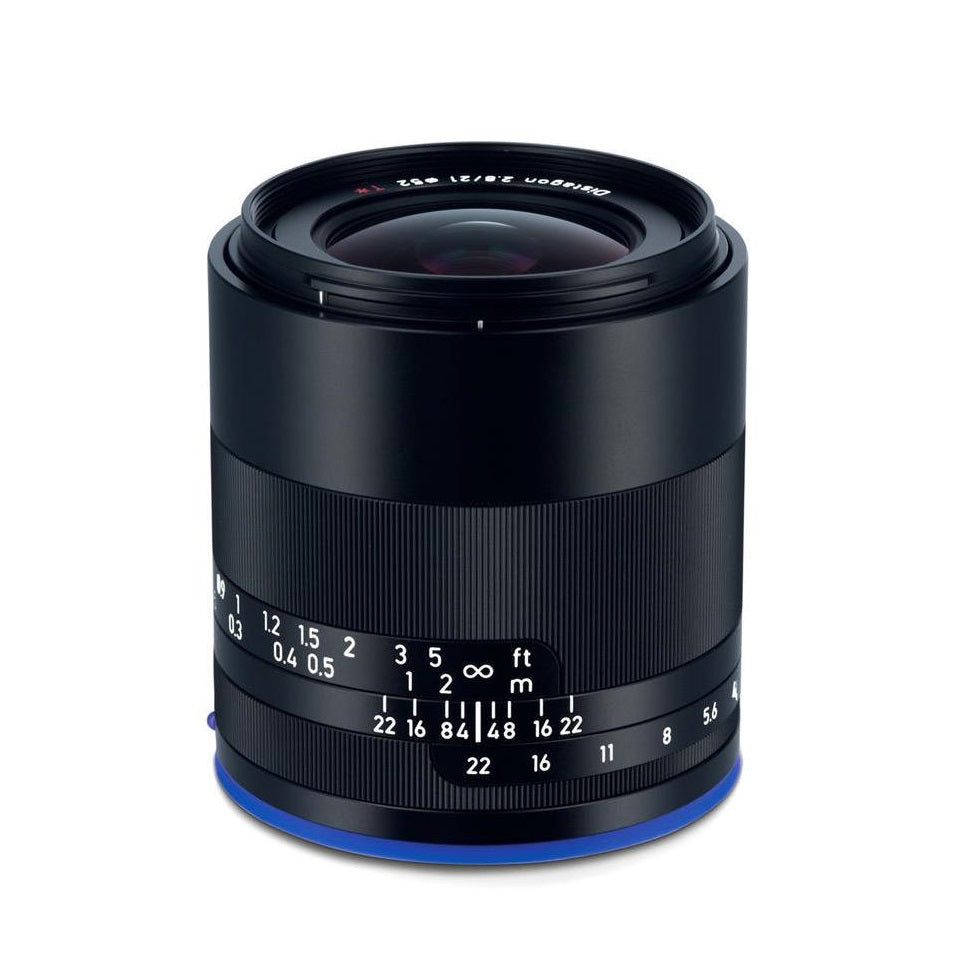Product Description
Zeiss Loxia 21mm F2.8 E Mount Lens for Sony Mirrorless Cameras (E-mount)
Compact and wide-angle in one
Despite its compactness, the super wide-angle ZEISS Loxia® 2.8/21 offers outstanding image performance – across the entire image field of a full-frame sensor. Whether architecture, landscape or also three-dimensional subjects in close-up against a spacious background – this focal length with its large image angle is an excellent addition to the Loxia lens family. It is an absolute must for wide-angle fans who want to capture even the tiniest details of a special moment in a photo or on film.

ZEISS Loxia lenses were specifically designed for Sony α7 cameras. This means that they can make the most of the mirrorless, full frame system, while giving you all the creative possibilities of ‘classic’ photography with manual focus at the same time.

And that’s not all: ZEISS Loxia lenses also provide everything you need to shoot high quality video, such as the unique DeClick feature for smooth adjustment of the aperture, for example.
Design
In SLR systems, when extremely large image angles are needed, the distance between the rear element and the image plane must be considerably longer than the focal length – the original field of application of Distagon lenses. This advanced retrofocus design can also be put to outstanding use in modern, highly corrected lenses with longer focal lengths.

Features
One completely new feature of the Loxia lens is that you can ‘declick’ the aperture’s locking mechanism using a tool (supplied) and an adjustment screw on the bayonet surface. This means that for video applications, you can smoothly eliminate any unwanted differences in brightness as you pan the camera. This feature can also be used with other video systems whose size makes them suitable for adaptation.

Precise manual focus
Manually focusing a lens means controlling the image result from your fingertips.
A good ergonomic design makes all the difference. ZEISS lenses stand out with their large rotation angle which enables precise focusing.
Changes are immediately visible in the viewfinder. The high-quality focusing mechanism moves smoothly without play, thus also supporting the intuitive interaction with the focal plane.
The precise engraving in meters and feet, and the depth of focus scale provide additional support for manually focusing.
Virtually distortion-free optics
Dramatic perspectives and a view from extraordinary image angles – ZEISS lenses open up new composition possibilities.

Distortion would disrupt the composition because straight lines, whose image does not go through the image centre, would be reproduced with a curved shape.
This annoying effect is accordingly and largely compensated through elaborate optical designs at all focal lengths.
High-grade full-metal casing
Tangible quality that holds its value is what qualifies ZEISS lenses for decades of hard use. A precision-engineered full-metal casing, grippy focus and aperture rings made of metal, and a tough front bayonet and filter screw guarantee stunning photographic results.
A special sealing ring on the bayonet also protects the interface between the camera and the lens.
Immensely compatible
The ZEISS Loxia lenses are suitable for use with the mirrorless Sony Alpha cameras with E-mount and were optimized for sensors up to full 35 mm format (24 x 36 mm).
With the ZEISS Loxia lenses, the aperture is controlled manually. This allowed the integration of the so-called DeClick feature of the mechanical aperture ring.
The cameras feature the corresponding automatic exposure control (A) and manual exposure control (M).



























